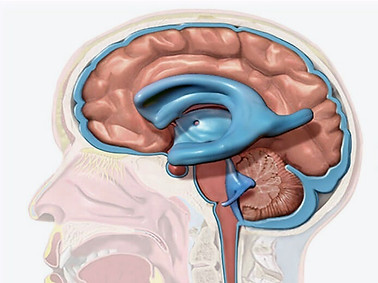TREATMENTS

Cervical Neck Hernia
As a result of traumas, strains, long periods of inactivity and water loss of the disc due to aging, wear and loss of function occur in the discs. As the outer layer of the disc is eroded or torn, the gelatinous fluid inside leaks into the vertebral and nerve spaces. This clinical picture is called neck hernia (cervical disc herniation).
Cervical Narrow Canal
The narrowing due to degeneration of the discs and joints between the vertebrae causes compression of the nerve roots. This is called the cervical narrow canal. "Stenosis" means narrowing, and "cervical stenosis" is the narrowing of the space in which the spinal cord and nerve branches pass, occurring in the neck region.


Scoliosis
Scoliosis is a three-dimensional spinal deformity that is the most common among spinal deformities and causes extremely serious posture disorders in the progressive stages. This deformity may occur due to the structural defect of the spine, or it may develop due to non-spineal causes.
Brain Stimulator
An Innovative Approach to Motion Control
Brain stimulation operations offer an effective surgical solution to correct damage to the brain's movement control areas. This method, which can be controlled remotely thanks to special electrodes, can successfully control symptoms such as hand tremors and head tremors. This innovative treatment offered by technology is an important step in alleviating the effects of neurological diseases and improving the quality of life of patients.


Brain Tumors
Cells that grow uncontrollably in the skull area are called brain tumors. These tumors can form inside the brain, or they can originate from the tissues around the brain and grow into the skull. Tumors located in the skull may show obvious symptoms depending on the increase in pressure.
Lumbar Disc
It is a disease that occurs with the formation of compression on the nerve tissue after the damage, deterioration and displacement of the disc tissue between the vertebrae. There is no vascular nutrition of the displaced stool tissue in herniated disc disease. Therefore, its recovery by regeneration is limited.


Lumbar Narrow Canal
The spinal cord carries the nerves that give sensation and strength to the legs. Due to arthritis (the destruction of cartilage tissue), the bones and ligaments of the facet joints in the spine thicken and put pressure on the spinal canal. These changes cause narrowing of the lumbar spinal canal, which is called lumbar narrow canal (spinal stenosis).
Aneurysms
Aneurysms are protrusions and bubbles that form in the arteries and aorta in the body. A brain aneurysm is a bulge or ballooning of blood vessels in the brain. Brain aneurysms are caused by thinning of the artery wall.


Hydrocephalus
Hydrocephalus is excessive fluid accumulation in and around the brain. The name of the disease consists of the Latin words meaning “water” and “head”. The incidence of congenital hydrocephalus in children is approximately 1 in 500 children.
Brain Bleeding
What is a Brain Bleeding? Cerebral hemorrhage is bleeding within the skull, brain tissue, brain cavities, and the surface of the brain. It can cause serious injury and death. About 1 million people a year suffer from cerebral hemorrhage.


Waist Slip
Lumbar Slipping Lumbar slippage is the forward slippage of the upper vertebra over the lower vertebra. Lumbar slippage, which occurs with aging and wear, is usually the forward slippage of the L4 vertebra over the L5. The "narrow canal" can often accompany the lumbar slippage.
Spine Fractures
The most common type of fracture is "compression fractures", in which the anterior portion of the vertebrae collapses. If the load on the spine is even more severe, then the middle and posterior parts of the vertebrae may also be broken and the broken parts may displace towards the spinal canal and injure the spinal cord. This type of fracture is called a "blast fracture".


Spinal Cord Tumors
Tumors that appear in the spinal cord or spinal cord, grow in soft tissues and affect the spinal bones are called spinal cord tumors. A spinal cord tumor, also known as an intradural tumor, causes different symptoms in patients depending on its size and location.
Carpal Tunnel Syndrome
The carpal tunnel is a narrow canal in the palm of the human hand, surrounded by bones and ligaments. Applying pressure on the nerve in the carpal tunnel called the median nerve, numbness, tingling and weakness in the hands and arms is called carpal tunnel syndrome.


Ulnar Nerve Compression
If the ulnar nerve is affected by a trauma to the elbow (such as after elbow fractures), the nerve is compressed in this tunnel due to the edema that develops in the nerve. This picture is called cubital tunnel syndrome or ulnar nerve compression syndrome.
